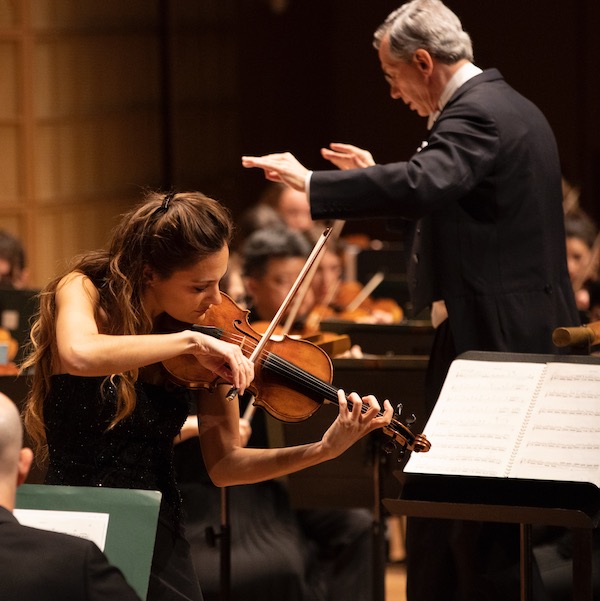Dallas Symphony soars with Macmillan premiere and rousing Bruckner

This week’s Dallas Symphony Orchestra program may not have attracted many to the Meyerson Symphony Center Friday night, but there was no shortage musical excellence on display, with a program featuring a U.S. premiere, led by DSO music director Fabio Luisi.
Sir James MacMillan’s Violin Concerto No. 2 was the new work on the menu, Written in 2021 by the Scottish composer, the work received its world premiere two months ago, played by Nicola Benedetti with the Scottish Chamber Orchestra. (The Dallas Symphony is a co-commissioner of the work along with the Scottish ensemble and two other orchestras).
The concerto is cast in a single 24-minute movement. The three chords that open the work are ornately expanded, spanning a series of emotional landscapes and moods. MacMillan’s eclectic musical language, marked by a firm emotional directness, is an elegant marriage of the modern and traditional, often spinning simple ideas into complex textures without sacrificing accessibility.
The heterogony of his style in experienced in striking technicolor as Benedetti, for whom the solo line was written, elegantly wove shimmering lyricism with stark austerity. The soloist was a steadfast advocate, affectionate and attentive by turns, as the piece traversed free-flowing and militaristic textures, connected by a string of virtuosic transitions.
Luisi and the DSO were sympathetic partners throughout. As the work neared its finale, an energetic passage featured several DSO musicians in a series of duets with Benedetti, all of which were delivered deftly before reaching a gorgeously placid close.
The second half of the program was dominated by Anton Bruckner’s massive Symphony No. 4. Subtitled “Romantic” by Bruckner himself, the history of this 64-minute work—and the material itself, for that matter—typifies the author’s entire symphonic career, which was marked by a mass of afterthoughts, deletions, additions, re-orchestrations, revisions, and new versions
His Fourth Symphony, which would be the first of his major compositions to earn him widespread acclaim, endured for nearly 15 years, with no less than seven versions and revisions identified by researchers. The most commonly performed 1878-1880 version was utilized for this concert program.
Luisi and the DSO did well to capture the expansive soundscapes of each movement. Moreover, the orchestra ably navigated the frequent and sudden shifts in tone and mood reminiscent of Bruckner’s irresolution.
Tremolo strings opened the first movement with a soft backdrop before which a lovely horn solo sounded the main theme, which opened up to the characterizing rhythmic figure used often by Bruckner. The melancholic second movement saw a beautiful duet between DSO associate principal flutist Hayley Grainger and principal oboist Erin Hannigan before an austere funereal march, led by string sections.
The third movement scherzo and trio wonderfully portrayed the rousing hunt atmosphere. The finale, marked by horn fanfares, lovely dynamic swells, and dizzying thematic about-faces was delivered with skill and finesse before a stylish and resounding coda.
The program will be repeated 7:30 p.m. Saturday. dallassymphony.org


